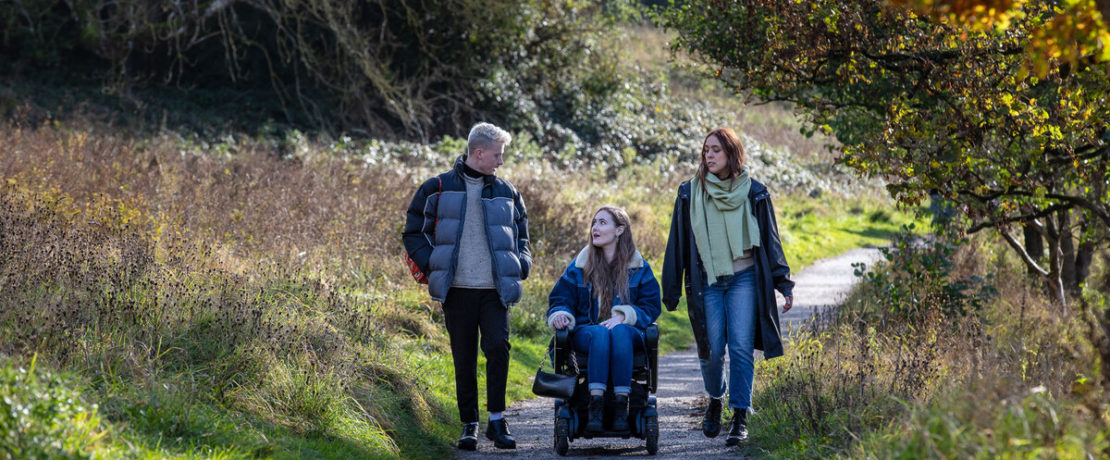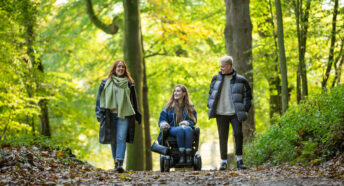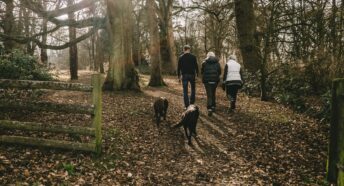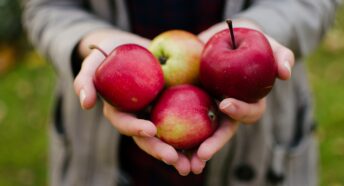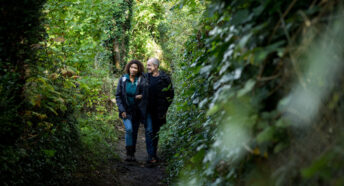A countryside walk in September
Autumn is upon us, but there’s still plenty to see in our countryside and green spaces.
The actual start of autumn is largely understood in two different ways. The meteorological autumn begins on 1 September every year, and the astronomical autumn begins at the September equinox (or Mabon), which this year is on the 23rd.
Regardless of the exact date, September is a transitional month from summer to autumn. Daylight hours are decreasing, as are temperatures. Landscapes are changing as fields are harvested and re-sown, or left fallow. Many plants and trees begin to produce nuts and seeds. Most notably in autumn, we’re treated to a wonderful spectacle of colour as deciduous trees and plants lose their leaves.
If you took a countryside or green space walk in August, hopefully you spotted some of the things we mentioned in our previous article. We always love hearing about your countryside discoveries, so do share your adventures with us so that we can celebrate our green spaces together. You can get in touch with us via Facebook, Instagram or Twitter.
Now, let’s take a closer look at what we might find out and about as autumn descends in September.
Autumn colour palette
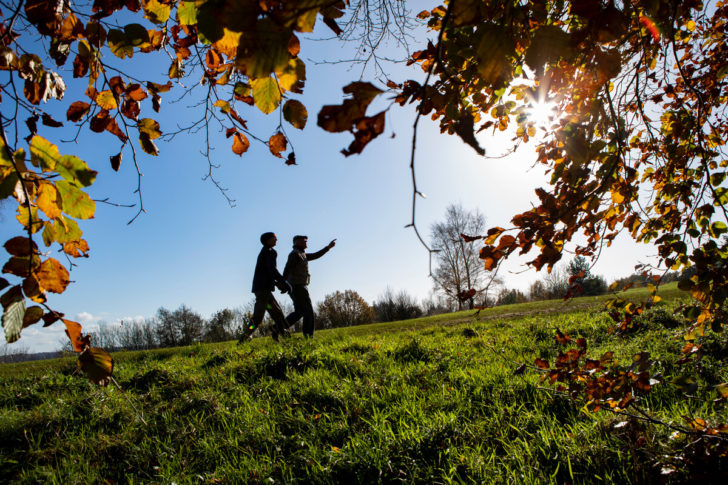
It would be remiss not to start with one of the most obvious visual cues of September, which is when deciduous trees begin to lose their leaves. Here’s a bit of the science behind this beautiful process …
The reason that leaves change colour is because the colder temperatures and lower light destroys chlorophyll (the pigment that makes leaves green). This means other colour pigments in leaves become more visible, in particular the reds and the yellows. Chlorophyll is important for photosynthesis (converting sunlight into energy) so when this starts to break down, the leaves are less effective at producing food for the tree. In other words, they’ve served their purpose!
After a breathtaking swan song of rich colour, the leaves are eventually cut off from the nodes on the tree. This quickens the process of decay which turns the leaves brown and crispy underfoot. However, the natural world is amazing at recycling. These leaves will decompose and nourish the soil for a long time to come.
As explored in a previous article about wellbeing, this whole process is actually the plant demonstrating self-care. Discarding the defunct leaves enables the tree to conserve moisture in the trunk. A bare tree is also better equipped to withstand strong and cold winter gales.
So, this month, be sure to head out and enjoy the start of this quintessential autumn display in your local countryside or green spaces.
Hedgerow fruits
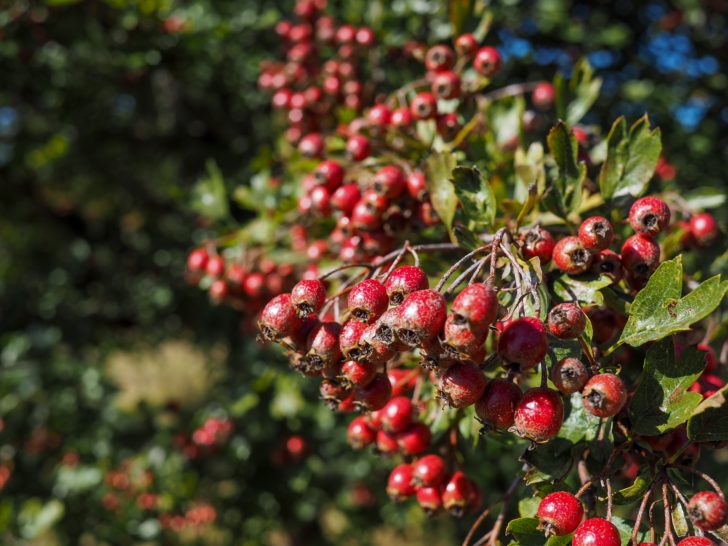
Hedgerows are the gift that keeps giving in our countryside. After providing shelter, soil stability and nectar, many plants also produce edible fruits and nuts in autumn.
September is a great time to look for fruits and nuts along hedgerows. To help you, check out our late-summer hedgerow foraging guide, or if you’re pressed for time, we’ll summarise below.
In particular, look out for elderberries which appear in clusters on elder trees. Elders aren’t conventionally planted in rows like other hedge plants, but often find their way among hedgerows. Their dark purple berries are favoured by loads of different birds, but also make an excellent wine or jam. Don’t eat them raw though – they can be toxic!
You may also find sloe berries; the juicy, dark purple fruit of the blackthorn. These are generally better for picking after a frost, but you can replicate this process at home by freezing them. Sloe berries steeped in gin with sugar makes an aromatic alcoholic drink called sloe gin. Hawthorn berries can also be found in abundance. They’re ready when they’re a rich, dark red and make an excellent ketchup.
Look out for hazelnuts too. In September, these will ripen naturally on hazel trees before falling to the ground, but you can pick them early and ripen them at home.
Foraging is a wonderful activity outdoors, but it should always be done responsibly and – where necessary – with the landowner’s permission. Wildlife relies on the bounties of nature that are produced locally to them, so if you do forage, be sure to leave plenty.
Busy mammals
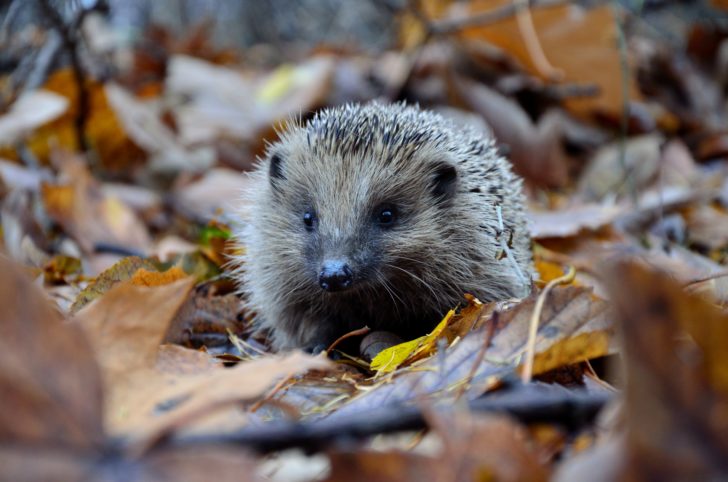
September, and autumn in general, is a time of great preparation in the small mammal world. Think dormice, hedgehogs and squirrels. They’ll be on the hunt for as much food as they can to build up fat reserves for the cooler months.
Dormice actually spend a lot of their time living in and around the tangled branches of hedgerow plants. However, in September they can be found scrambling around at the base of trees and hedges for nuts. They’re still quite elusive, but a walk in September – particularly near hazel – will boost your chances of spotting one.
Hedgehogs are also quite difficult to spot, not least because they’re mostly active during the evening. In fact, if you do spot a hedgehog in the daytime, it could be in trouble and you may need to help. Look out for hedgehogs during dusk and twilight, shuffling around at the base of hedgerows and trees. They may also be exploring mounds of leaf litter and rummaging through twigs and logs looking for insects.
Squirrels are, of course, a more common sight. They can usually be found in parks and gardens, as well as any green space with plenty of trees or tall hedgerows to climb around in!
A bit waspish
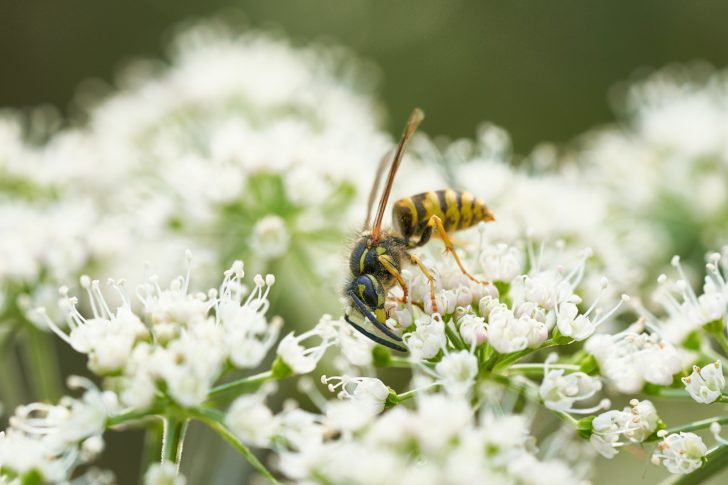
You might spot a few wasps in September in our countryside and green spaces. This can be a cause of annoyance and anxiety for many people, but it’s important to reflect on what wasps have done this year.
Wasps, like many other pollinating insects, spend a lot of their time faithfully serving their queens and her young. They dutifully forage to feed young grubs, and drink plenty of nectar to give them energy. As a result, wasps have performed two vital functions for us: they’ve pollinated flowers and crops, and have helped naturally control garden and agricultural pests.
From late summer, the queen stops laying and worker wasps become ‘redundant’. Because there are no young to feed, they stop receiving the sweet rewards they’re used to when serving an active hive. So, they tend to fly about quite aimlessly looking for sweet treats to get their fix. This is why they’re found wherever there’s food, fruit, fizzy drinks and beer.
While this can be a bit annoying, wasps are a huge ally of our countryside, so avoid harming them if you can. If you’re planning to relax in your local countryside, parks or green spaces this month then it’s a good idea to be prepared. Take a small pot of something sweet (like syrup or jam) and pop it somewhere nearby. You should find that they focus on that, rather than you. Hopefully this will make your September walk a little more relaxing!
Enjoy your walk
That’s it for this month – but always bear in mind that these lists aren’t exhaustive. We hope you’re able to explore your local countryside and green spaces this month. Check back soon and we’ll share with you the wonders of the countryside in October.
